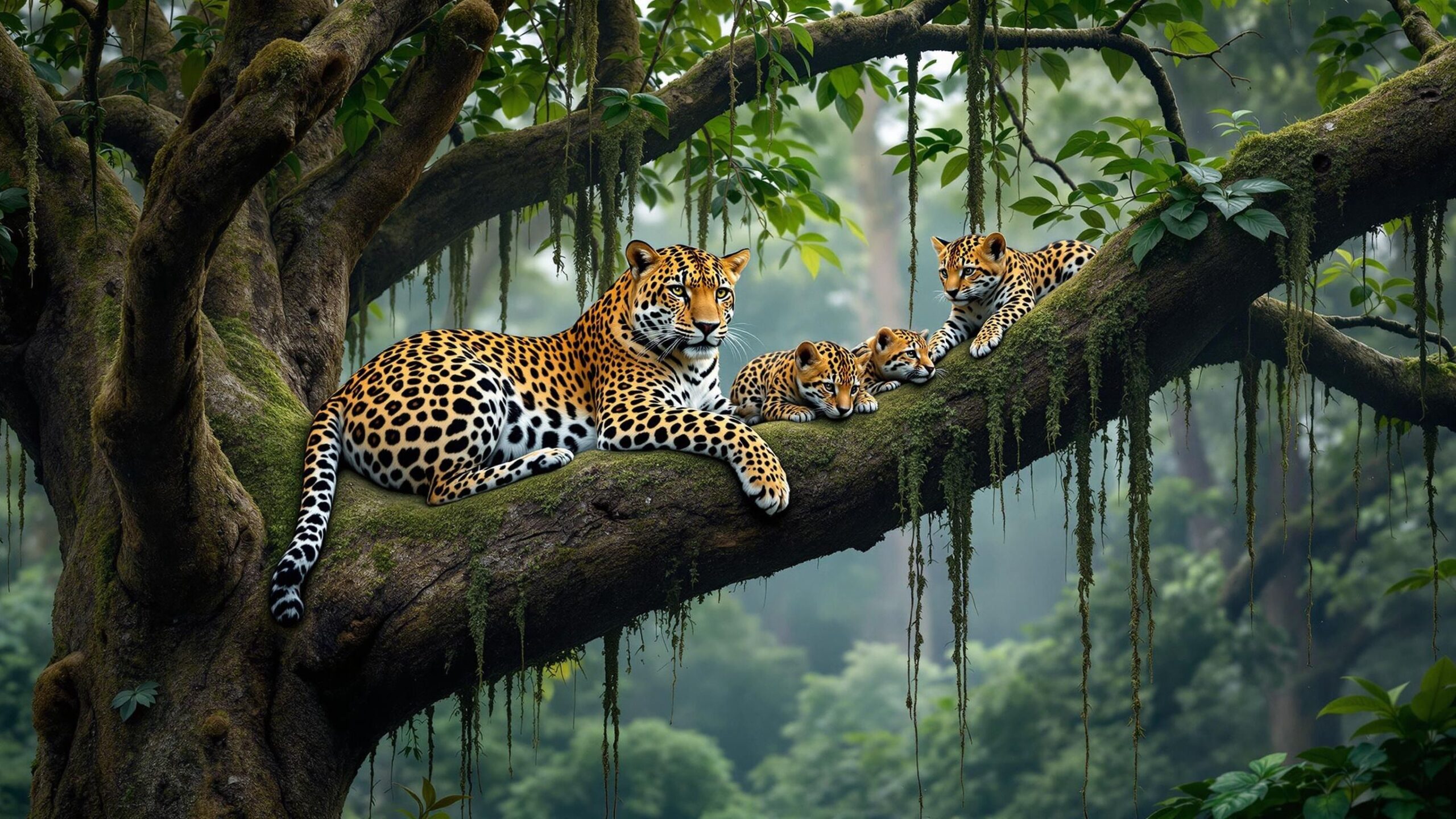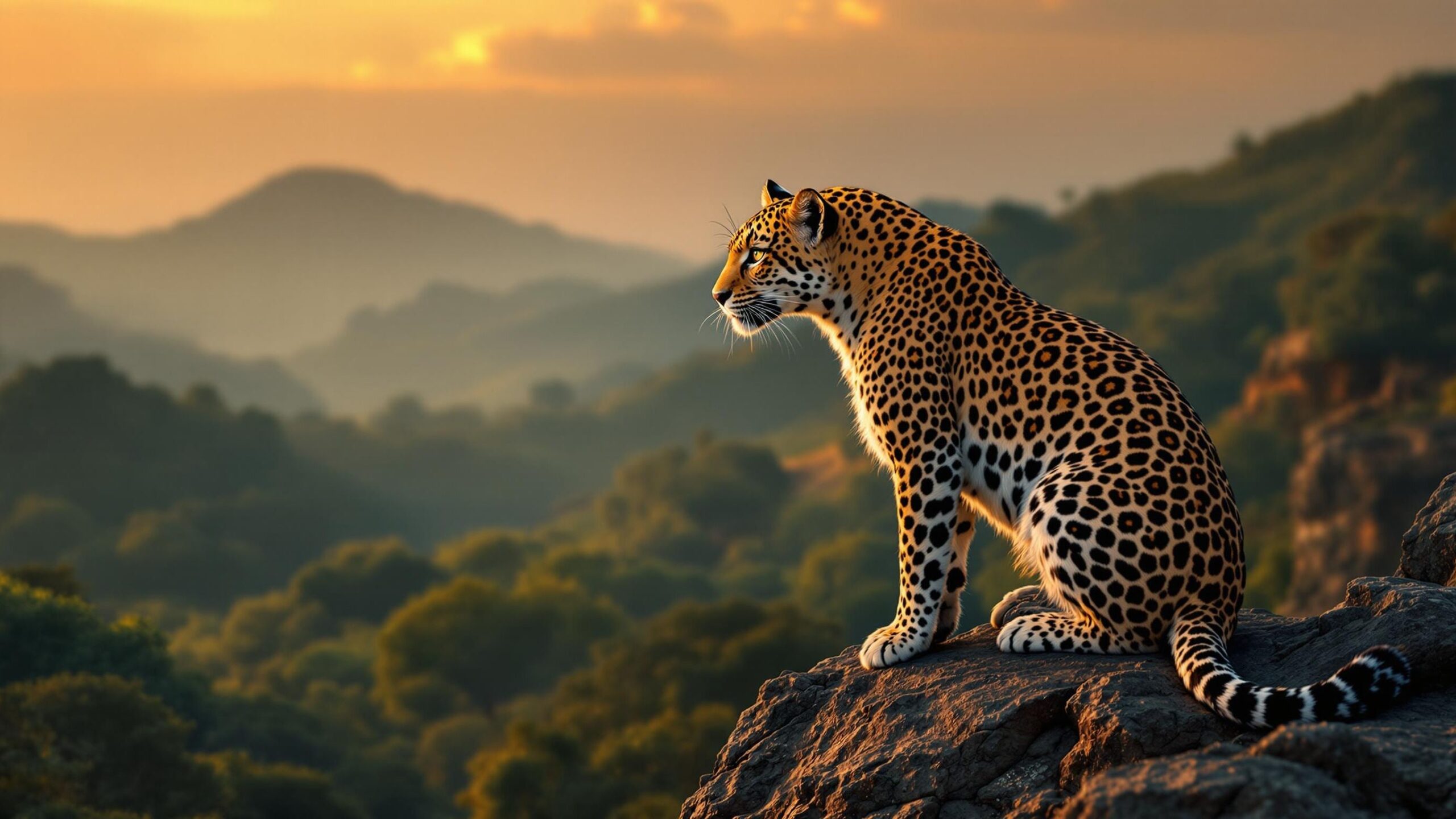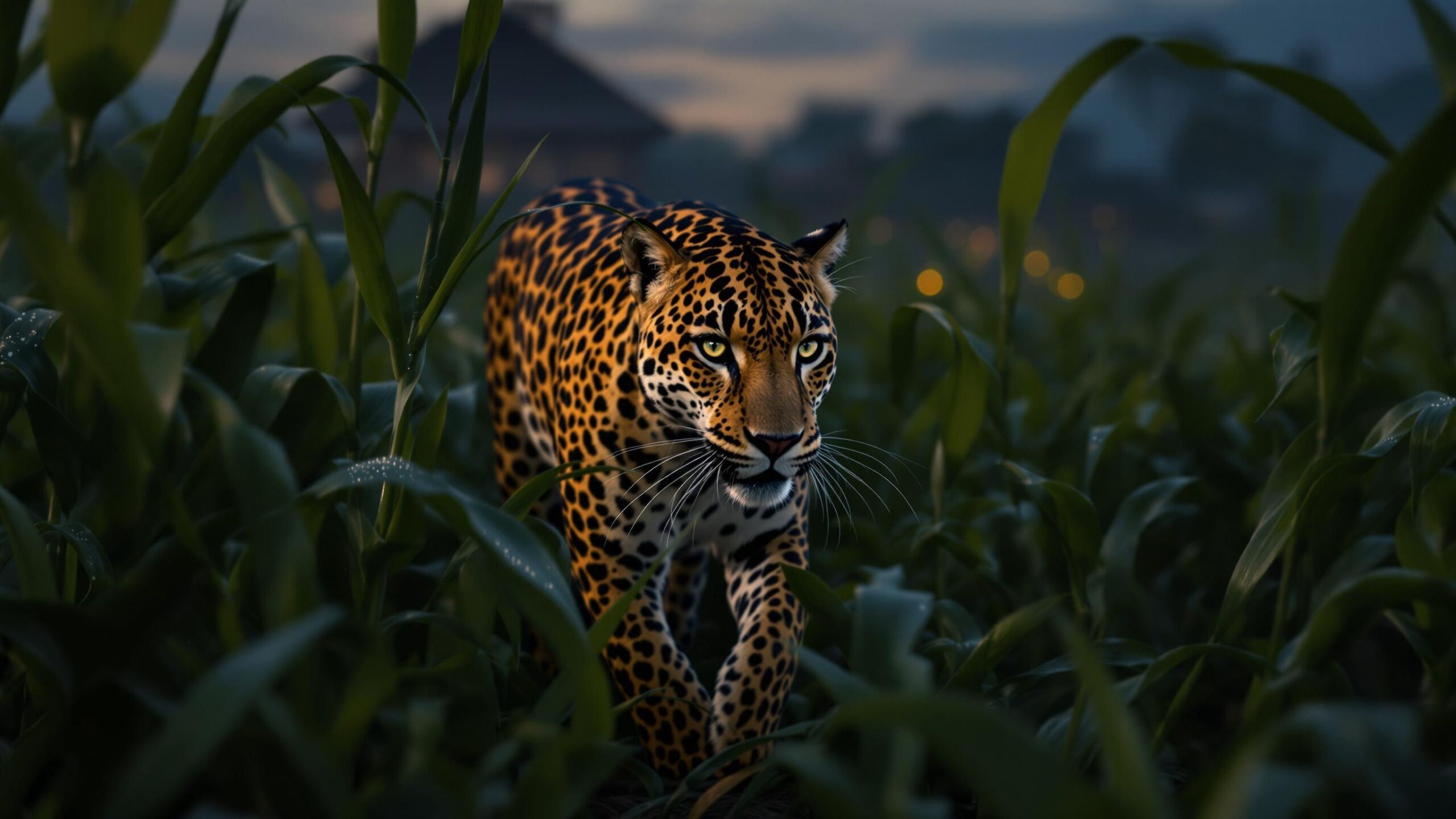Indian Leopard: The Ghost of the Jungle
The Indian leopard (Panthera pardus fusca) is one of the most elusive and adaptable big cats roaming the wild landscapes of the Indian subcontinent. A subspecies of the leopard, it is known for its striking golden coat adorned with dark rosettes, intense amber eyes, and a reputation for mystery. Despite being highly adaptable and widespread, the Indian leopard remains a misunderstood predator—often seen but rarely understood.
A creature of stealth and shadows, the Indian leopard thrives in a variety of habitats, from the dense tropical forests of the Western Ghats to the arid scrublands of Rajasthan. It has learned to live in close quarters with humans, sometimes perilously close, in agricultural areas and even the outskirts of bustling cities. This resilience makes the Indian leopard one of nature’s most versatile survivors—but also one of its most vulnerable.
A Big Cat With a Distinct Identity
Belonging to the family Felidae and the genus Panthera, the Indian leopard is one of nine recognized leopard subspecies. Its scientific name, Panthera pardus fusca, reflects both its taxonomic position and its physical features—the word “fusca” referring to the animal’s dusky or brownish coat. While all leopards share common traits, the Indian leopard is set apart by its relatively large size among Asian leopards, and its heavier rosettes that contrast starkly against a rich golden-yellow background.
Mature males typically weigh between 50 to 77 kilograms (110–170 lbs), while females are smaller, averaging 29 to 34 kilograms (64–75 lbs). Body lengths can stretch up to 6.2 feet (including the tail), with a shoulder height of about 2 feet. These agile cats are strong climbers and swimmers, capable of dragging prey twice their size into treetops for safekeeping.
Wide-Ranging Yet Hard to Spot
The Indian leopard enjoys the broadest distribution of any large carnivore in India. It is found in almost every state, occupying a diverse range of ecosystems, from Himalayan foothills to semi-arid deserts, and from mangrove swamps in the Sundarbans to tea plantations in the northeast. This impressive geographic span illustrates the species’ exceptional adaptability.
However, their very success in adapting to various habitats has become a double-edged sword. Because leopards are frequently seen near villages, farms, and even suburban neighborhoods, their population is often overestimated. In reality, their numbers are declining due to habitat fragmentation, poaching, and increasing conflict with humans.
Born to Be Stealthy: Behavior and Hunting Techniques
Leopards are solitary, territorial animals. Males occupy large home ranges that may overlap with those of several females but rarely with other males. Females maintain smaller, more exclusive territories, especially when they are raising cubs.
The Indian leopard is a master of ambush hunting. Using the element of surprise, it relies on stealth and a sudden burst of power to pounce on its prey. Its diet is one of the most varied among big cats, including deer, langurs, wild boars, peafowl, and even smaller prey like hares or rodents. In areas close to human settlements, leopards may also prey on livestock and feral dogs, often triggering conflict. One of the most fascinating aspects of the leopard’s behavior is its habit of dragging kills up into trees. This remarkable feat, performed with effortless grace, keeps the carcass safe from scavengers like hyenas and jackals, and even other big cats like tigers. The Indian leopard hunts mostly at night, using its exceptional night vision and keen sense of hearing.

Secretive Reproduction and the Solitary Life
Breeding among Indian leopards is not strictly seasonal, though more births occur during the winter and early spring. After a gestation period of about 90 to 105 days, a female gives birth to a litter of 2 to 4 cubs in a secluded den—often a cave, hollow tree, or dense thicket.
The cubs are born blind and completely dependent on their mother. They remain hidden for the first few weeks of life and begin to explore only after a couple of months. During this period, the mother is intensely protective and moves her young periodically to avoid detection by predators or rival males. Young leopards stay with their mother for up to two years, learning the vital skills of hunting, navigation, and survival. Once independent, they disperse in search of their own territory, often traveling long distances and facing high mortality due to territorial conflicts or human-related dangers.
A Cat of Many Conflicts
The Indian leopard’s ability to live near human settlements is both its strength and its curse. As forests shrink and human settlements expand, leopards often find themselves navigating a mosaic of farmlands, villages, and urban sprawl. This has led to increasing instances of human-leopard conflict.
Encounters can be as minor as a glimpse of a leopard in a sugarcane field, or as serious as attacks on livestock—or, in rare but tragic cases, people. These situations are typically a result of misunderstanding and panic. Leopards do not see humans as prey; attacks are usually defensive, triggered by surprise or threat. Many Indian states have developed wildlife rescue teams trained to handle leopard encounters, using cage traps and tranquilizers to safely relocate the animals. Education and awareness campaigns are growing in importance, helping people understand how to coexist with these apex predators.
Conservation Status and Threats
Classified as Vulnerable on the IUCN Red List, the Indian leopard faces a range of threats that endanger its long-term survival. Habitat loss due to deforestation, mining, and urban development has fragmented the leopard’s territory, making it harder for individuals to find mates, hunt, and maintain genetic diversity. Poaching remains a persistent threat. Leopard skins, bones, and other body parts are in demand in the illegal wildlife trade, both for traditional medicine and fashion. Although national laws in India provide strict protection under the Wildlife Protection Act of 1972, enforcement remains a challenge in remote areas.
Another serious issue is roadkill. As highways and railway lines carve through natural habitats, more leopards are falling victim to vehicle collisions, especially in areas without proper wildlife corridors or underpasses. Despite these challenges, India has made some strides in leopard conservation. Protected areas such as national parks, wildlife sanctuaries, and tiger reserves offer relatively safe habitats. Camera trap surveys and population monitoring have improved over the years, giving scientists a clearer picture of leopard distribution and density.
The Leopard in Culture and Folklore
The Indian leopard is deeply woven into the folklore and cultural psyche of rural India. Stories abound of shape-shifting leopards, guardian spirits, or vengeful beasts. In some traditions, the leopard is revered as a symbol of strength and cunning; in others, it is feared and demonized.
This duality is mirrored in modern media, where leopards are often portrayed as both beautiful and deadly. Nature documentaries have helped shift public perception, showcasing the animal’s elegance and ecological importance. However, tabloid headlines and viral videos of leopards wandering into cities can also fan irrational fears. Ultimately, fostering a deeper understanding of the leopard’s behavior and role in the ecosystem is key to changing public attitudes and ensuring the species’ survival.

Adapting to a Changing World
What makes the Indian leopard so remarkable is its adaptability. Unlike more habitat-sensitive species, leopards have demonstrated an extraordinary ability to live in human-dominated landscapes. Some have even been documented navigating dense urban areas, moving silently through city streets at night before returning to nearby forests.
This adaptability does not mean that leopards can survive without wild spaces. Natural habitats provide not just food and shelter, but also safety from threats like poaching, persecution, and traffic. Wildlife corridors, protected green belts, and thoughtful land-use planning are essential for maintaining connectivity between leopard populations. Moreover, community involvement plays a crucial role. In many parts of India, conservation initiatives now focus on educating local communities, offering compensation for livestock losses, and involving people in monitoring efforts. When local residents become stewards of wildlife, both people and predators benefit.
A Future of Coexistence
The story of the Indian leopard is one of survival against the odds. It has learned to live alongside the world’s second-largest human population, navigating an increasingly fragmented landscape with stealth and grace. Yet, its continued existence is anything but guaranteed. True coexistence requires more than just tolerance—it requires respect, planning, and commitment. From enforcing anti-poaching laws to creating safe passageways across roads, from educating children about biodiversity to involving villagers in conservation, every step counts.
The Indian leopard doesn’t need saving in the traditional sense—it needs space, understanding, and a place in our collective vision for the future. If we listen to the quiet rustle of leaves in a moonlit forest, or the distant bark of a deer in alarm, we may just catch a fleeting glimpse of this extraordinary cat. And in that moment, we’ll be reminded that the ghost of the jungle still walks among us.

